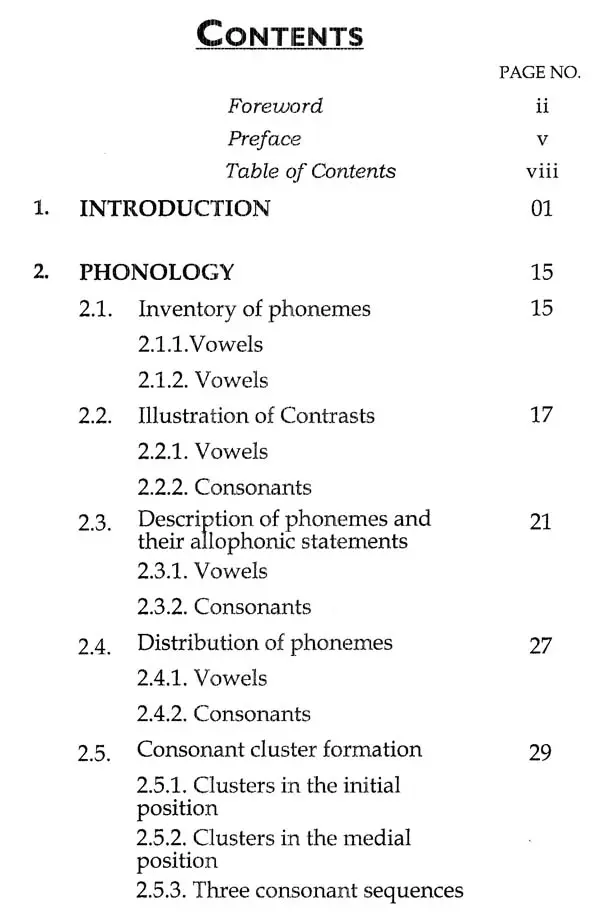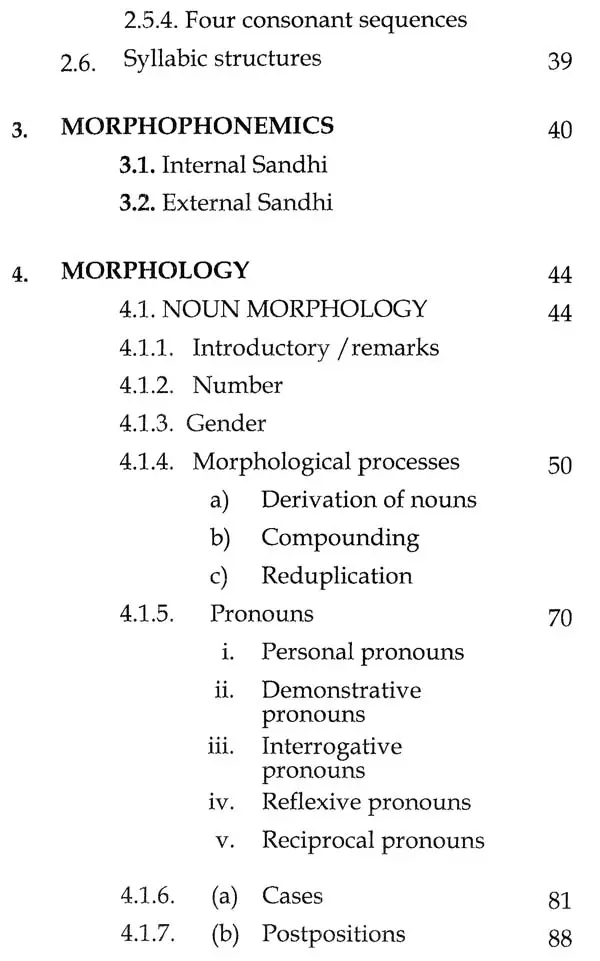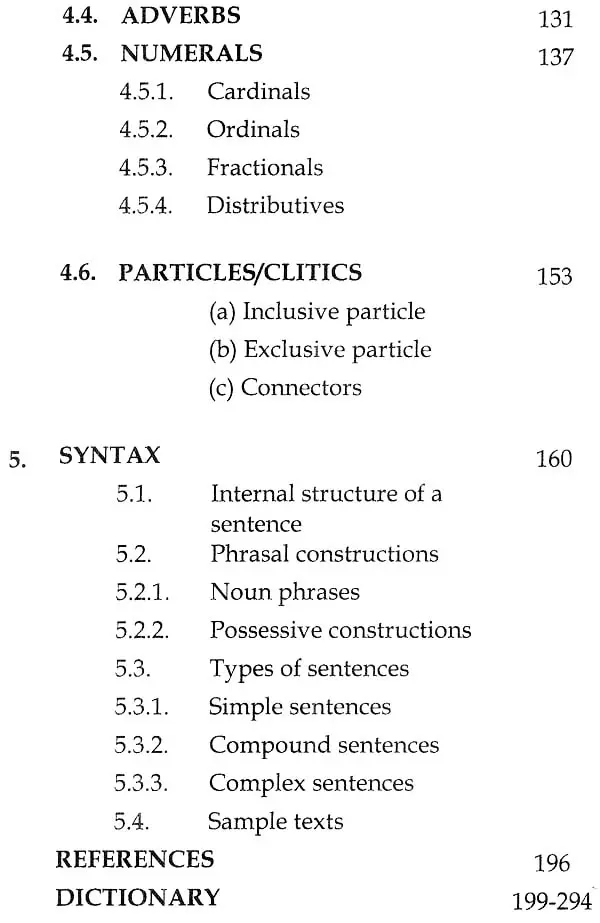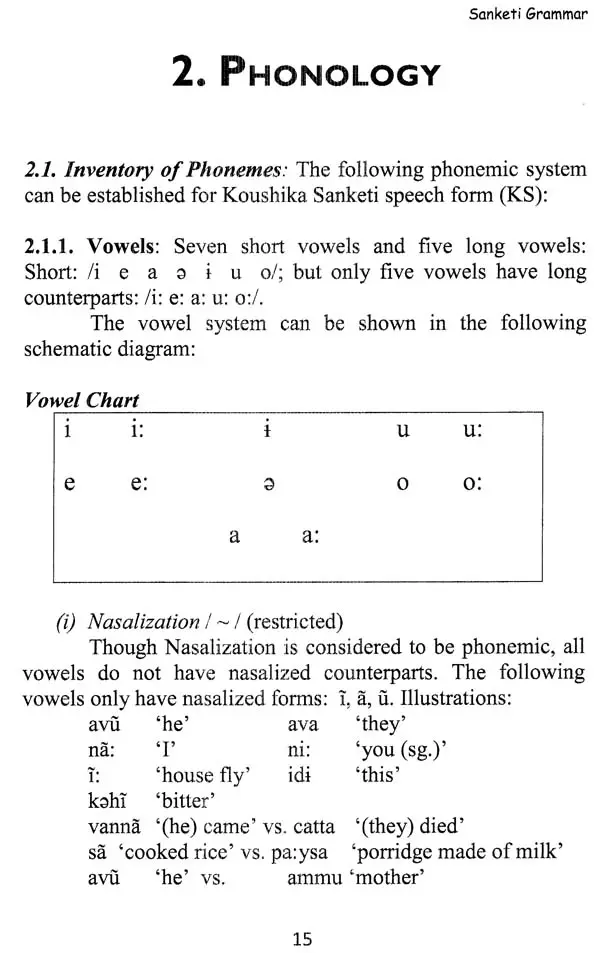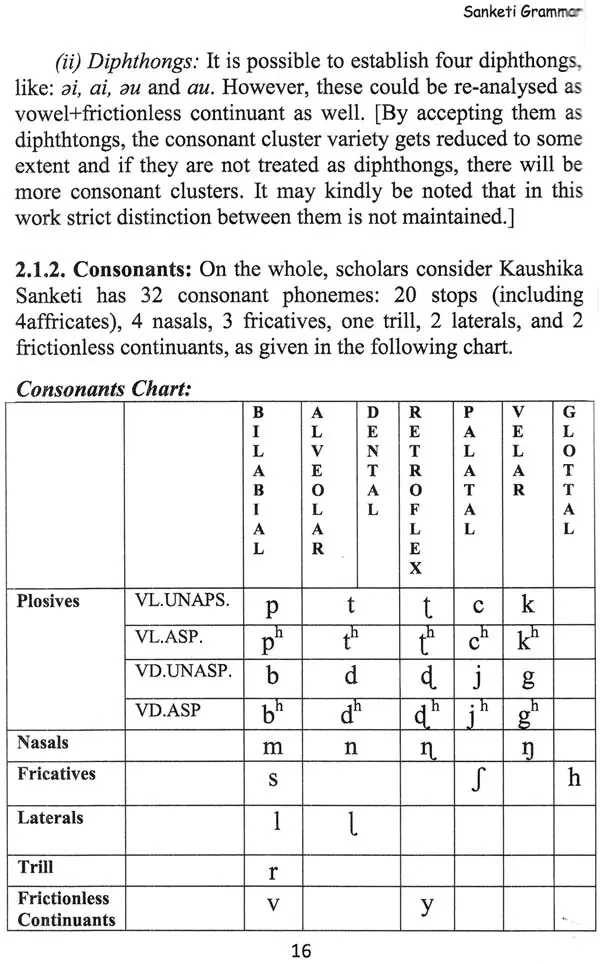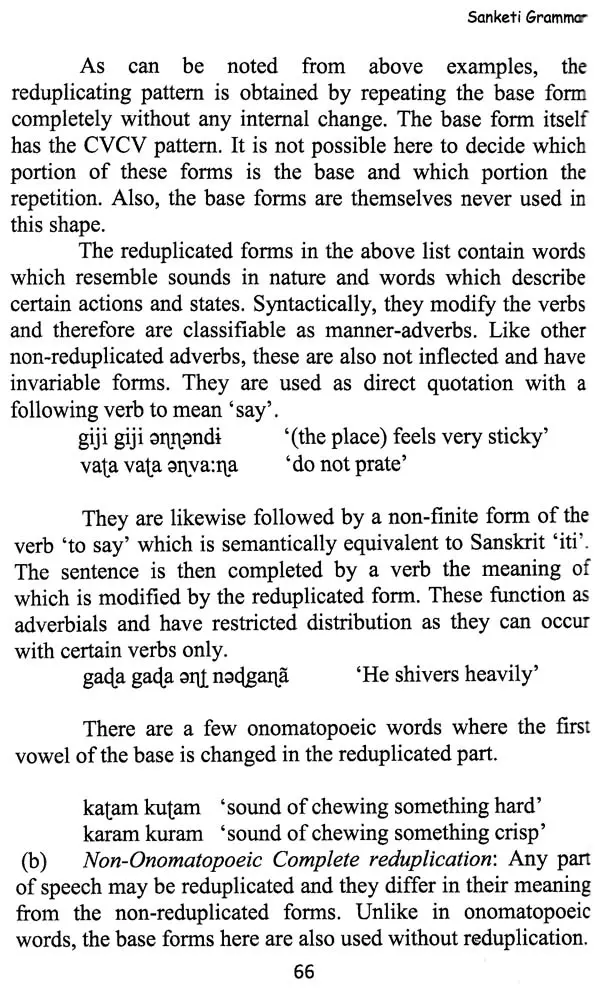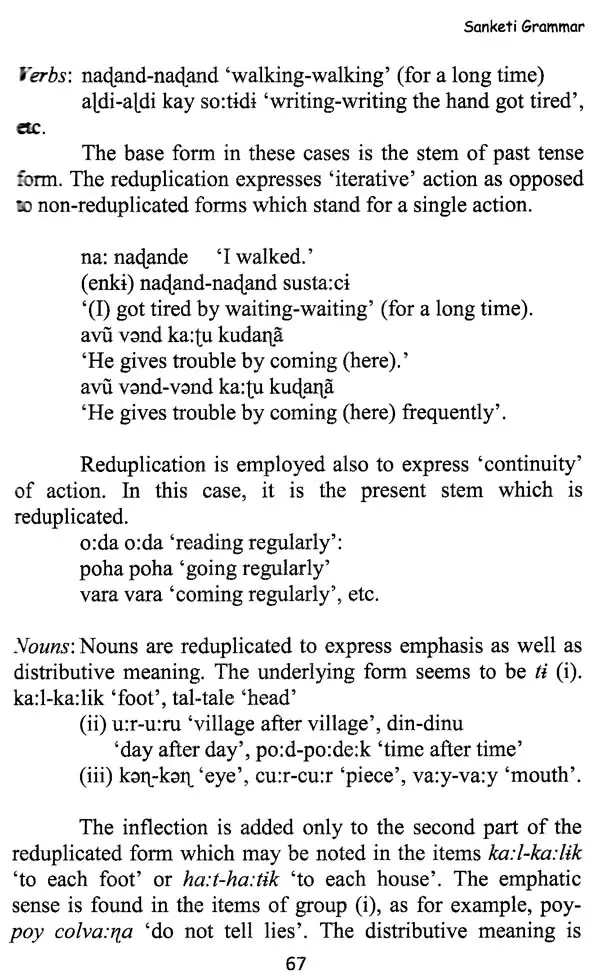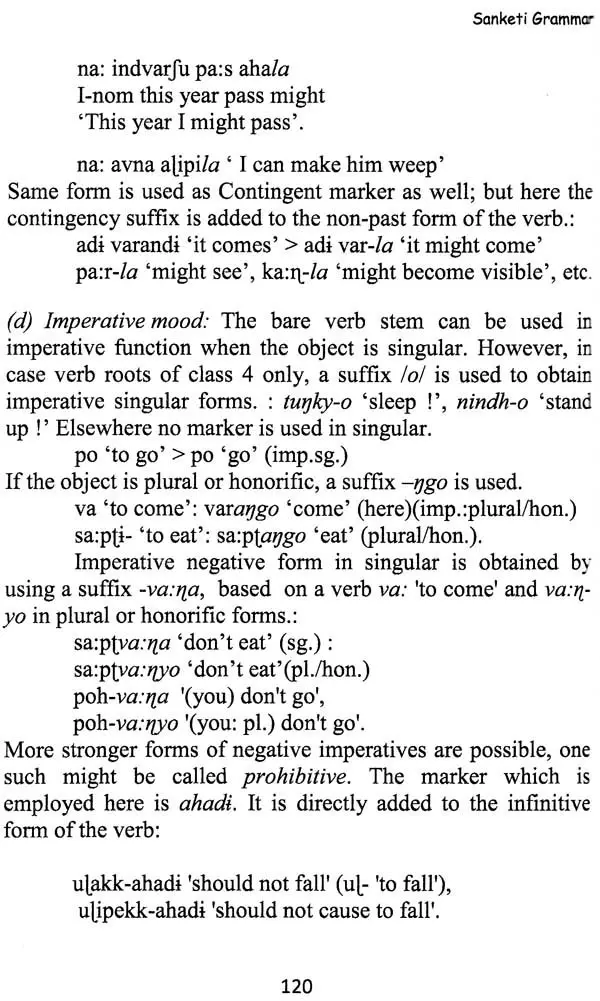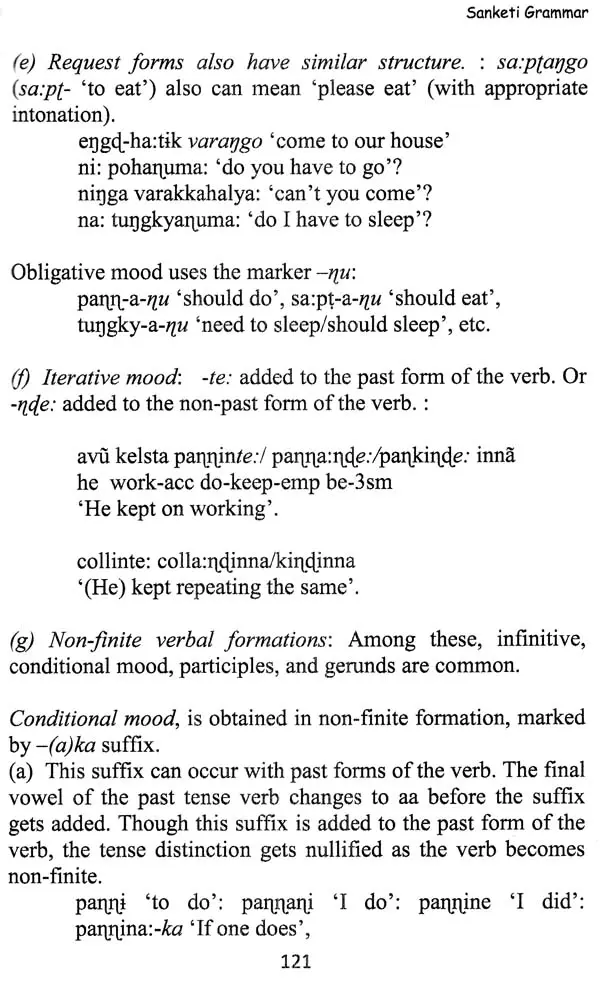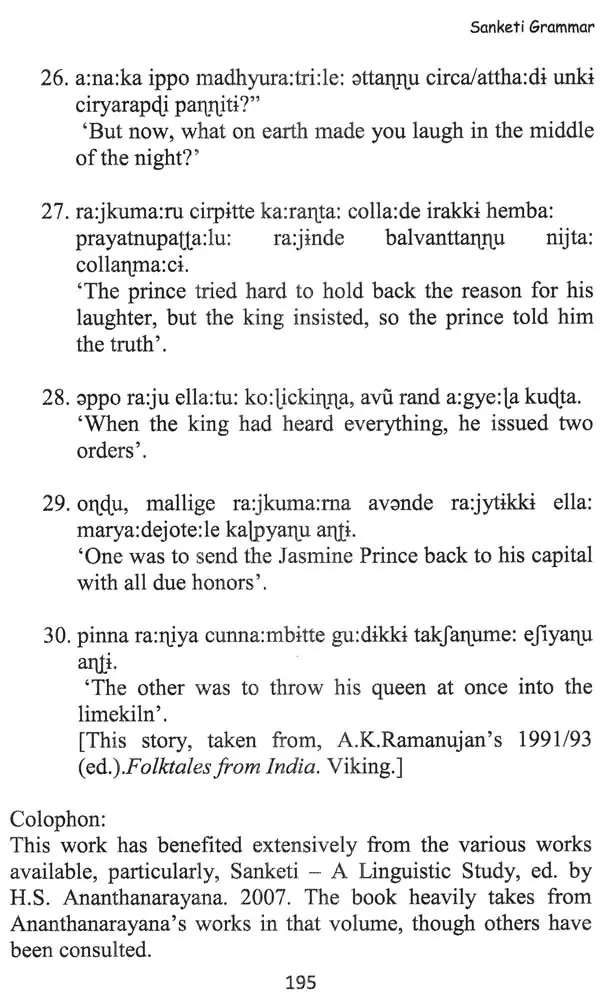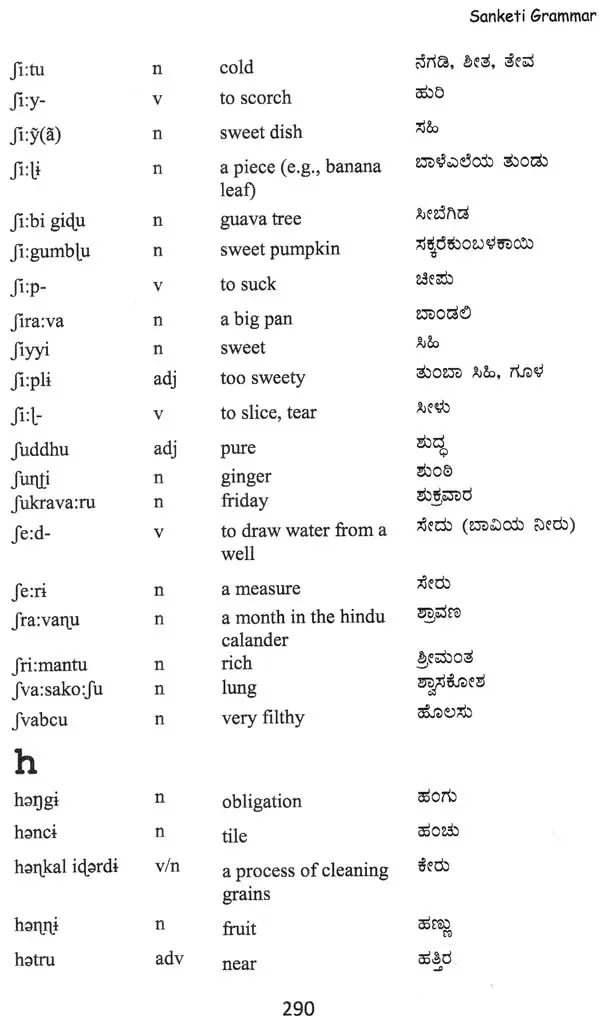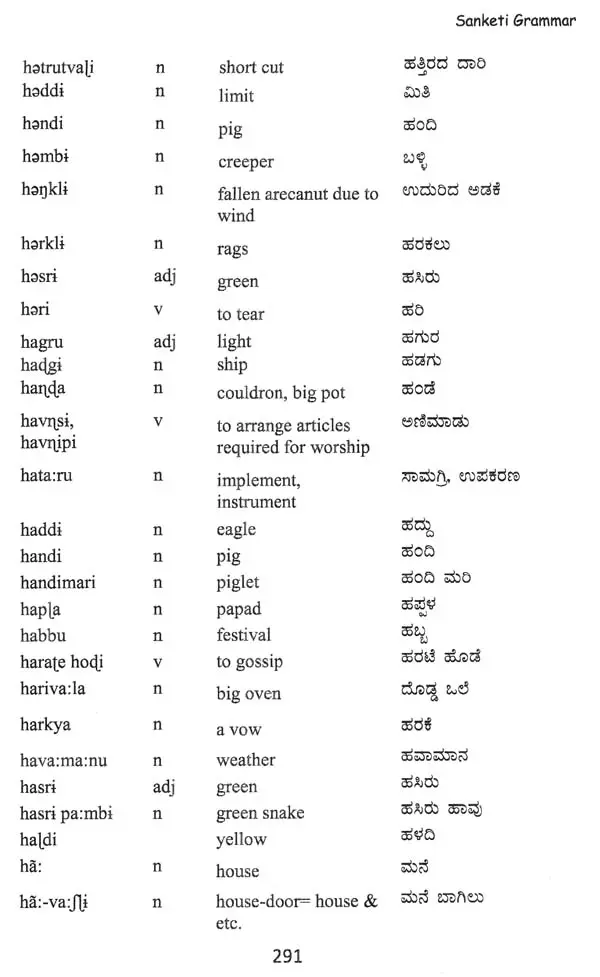
A Grammar of Sanketi
Book Specification
| Item Code: | UAH348 |
| Author: | K. S. Nagaraja |
| Publisher: | Central University of Karnataka |
| Language: | English |
| Edition: | 2020 |
| Pages: | 294 |
| Cover: | PAPERBACK |
| Other Details | 8.50 X 5.50 inch |
| Weight | 360 gm |
Book Description
In view of the aims and in pursuance of the direction by the Government of India the University started a Centre for Endangered Languages in November 2015. The Centre's main aim is the preservation and promotion of endangered languages through documentation and revitalisation for restoring the status of these languages used to enjoy in the past. The Centre also works to empower the Endangered Language communities too in possible ways by training the persons from among them for sustainable development.
Language is not only a tool for communication, but also a base for the intellectual outputs of knowledge, culture and civilization of mankind. Due to the impact of science and technology, and the process of globalization, many of the world languages are at the verge of extinction. Language endangerment may lead to the loss of a language, historical and ethnic identity. India has the large number of endangered languages.
The data has been not only collected directly from the native speakers (particularly from Shri Subrahmanya, of a place called Basavapatna, in Hassan district), but also supplemented by the present writer, as he himself belongs to the same community and also verified with many members of the community.
Sanketi is a Dravidian speech form, spoken at present primarily in a few urban centres like Bengaluru and Mysuru; some villages of Hassan, Mysuru, Shivamogga and Chikmagalur districts of Karnataka, and scattered around the world in small numbers by a section of Smartha Brahmins called Sanketis. Though their exact population is not known (as no survey has been made in the recent history; but according to Census report of 1891, the population was 2522 only); their population in 1991 was estimated to be around twenty five thousand, and now it is estimated that their number might not be more than half a lakh. The Sanketi community living in the present state of Karnataka is a pretty small one. There does not seem to be any contact with other Sanketis who might be still living in Kerala and Tamil Nadu. They are spread in around fifty villages in the districts of Hassan, Mysuru, Chikmagalur and Shivamogga. Within this group four subgroups are identified based on their (so-called) migration and places of settlement (KSN 1993). They are: Kaushika Sanketis (KS)(those who supposed to have settled first at a place called Kaushika, near Hassan town, and later spread to various villages (numbering more than 35 villages in Hassan dt.), Matthur-Hosahalli Sanketis (M-HS) (those living in Matthur and Hosahalli of Shivamogga district), Lingadahalli Sanketis (LS)(those living mainly in Lingadahalli, in Chikmagalur district), and Bettadapura Sanketis (BT)(those living in and around Bettadapura, in (Mysuru dt.)
Book's Contents and Sample Pages

